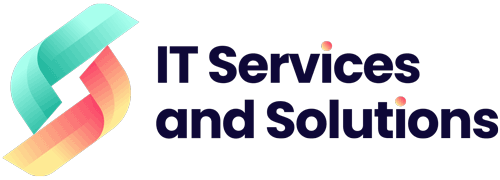Are you considering taking a course in web design? If you are confused about how to learn web design you are on the right page. By learning web designing skills you can create desirable websites, enhance user experiences, and even pursue a rewarding career. Imagine being able to build visually appealing websites that attract visitors and capture their attention.
If you master web design, you gain the power to shape online experiences, dig into your creativity and stand out in the digital field. With a solid foundation in HTML, CSS, JavaScript, and responsive design you can build websites that flawlessly adapt to different devices. Discover this key to master this valuable skill and unlock a world of creative opportunities.
How to Learn Web Design?
Web design is the process of developing and designing a website’s visual identity, structure, and layouts. It includes the usage of various technologies to structure web pages online, manage how they are shown to the audience, and improve user experience.
In order to learn web design, the steps below must be followed.
1- Develop Skills Required to Become a Web Designer
A professional web designer must have a combination of creative and technical skills. If you want to know how to learn web design check out the following skills you need to acquire before stepping into the career of a web designer.
- Gain knowledge about CSS and HTML which are the basics of web designing. These both help in structuring and enhancing the features of websites.
- Learn about design software and tools. It can significantly improve your design workflow and help in building wireframes and prototypes.
- Develop communication skills to interact and deal with clients and developers.
- As web designing is an evolving field where you always have to stay up to date and for that matter you adapt continuous learning skills to stand out among your competitors.
- It is beneficial to acquire problem-solving skills to resolve technical challenges in web design.
- You must be aware of how digital marketing components work that will help you operate your own website efficiently.
2- Know the Basic Principles of Visual Design
For the purpose of building aesthetically pleasing and user-friendly web designs, it is essential to know the fundamentals of visual design.
Contrast
Learn how to create contrast using various features such as line, color, shape, or texture. Learn how to apply contrast to grab readers’ attention, highlight key details and enhance readability.
Alignment
Learn the importance of aligning web page elements in order to generate an efficient and well-organized layout. You can discover the alignment techniques such as center, left, or right alignments.
Color
Study the color theory and understand how color schemes affect web design. You will also get to know how colors affect order to evoke emotions, design a visual hierarchy, and build brand identity.
Typography
Learn about the fundamentals of typography, including hierarchy, readability, and font pairing. It is important to have knowledge of font sizes, line spacing, and ideal line lengths for readability.
3- Learn User Interface (UI) and User Experience (UX)
To understand the concept of UI and UX knowing the differences between them is important in the first place.
User Interface (UI)
- The aim of UI design is to develop a visually appealing and user-friendly interface that makes it easier for people to interact, and understand the content, and functionality of a website easily.
- It includes designing the layout, visual elements, color schemes, buttons, and menus.
- It deals with the details involved in visuals such as visual hierarchies, typography, iconography, and consistent branding.
User Experience (UX)
- UX includes the overall experience and satisfaction that users have when interacting with a website or application.
- It involves understanding users’ needs, goals, motivations, and behaviors to create a user-centric design.
- It also conducts user research and creates user personas to provide a seamless and meaningful user experience.
In short, both UI and UX are integral parts of web design learning and they work together to create successful and user-centric designs.
4- Discover Tools to Learn Web Design
You can learn web design with the help of a variety of tools. Mentioned below are some popular tools that you can consider:
HTML and CSS Editors
- Visual Studio Code: It is a popular free source code editor that has solid features and extensions for HTML, CSS, and other web technologies.
- Sublime Text: It is a lightweight and customizable text editor that is easy to use and has a wide range of features for web development.
Design Software:
- Adobe XD: It is an effective design and prototype tool for developing dynamic and visually appealing web designs.
- Figma: a cloud-based design and prototype tool that works across many platforms and allows real-time collaboration.
How to Learn Web Design- In a Nutshell!
Learning web design is a fun and exciting journey that calls for a mix of theoretical understanding, real-world experience, and a will to constantly learn and adapt. Always remember that web designing is a process that calls for preservation and practice.
If you follow all the steps mentioned above with dedication and passion you can become a proficient web designer. So, are you willing to get started on your journey to become a skilled web designer? Don’t wait, start creating excellent digital experiences today with . We provide all the services regarding web designing.
Related FAQs!
Q1) Can anyone learn web design?
A1) Yes, anyone of any age can learn web design. You just need a spirit of learning skills and knowledge and you are good to become a web designer.
Q2) Which software is best for web design?
A2) There is much software for web designing depending on the preferences of the user, some popular software including WordPress, Canva, Adobe XD, Zyro, etc.
Q3) What web design contains?
A3) Web design contains many elements that combine together to create visually appealing websites such as layouts, color schemes, typography, SEO, content creation, UI, and UX.
Q4) What technology do web designers use?
A4) Web designers use CSS and HTML often in building web pages.

